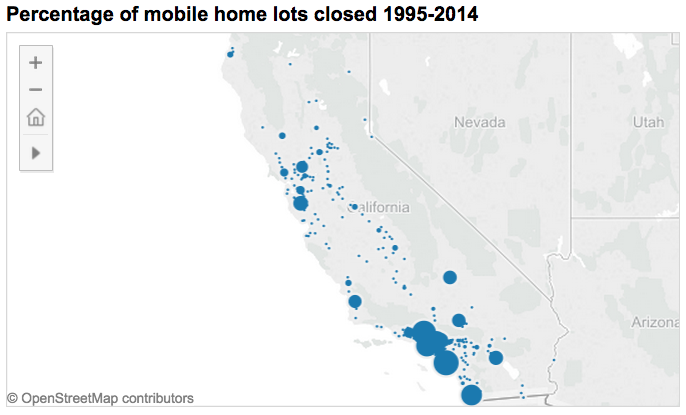Affordable housing for middle- and lower-income families is drying up by the month in California. Among the hardest hit are those living in mobile home parks. In the last decade, 4,792 mobile home lots in the state have vanished from the map according to data from the California Department of Housing and Community Development, with even more expected to disappear.
“Affordable housing is like the spotted owl or the tiger. If we don’t go out of our way to save what we have, then we’ll lose it forever,” said Winter Dellenbach, founder of the local community group Friends of Buena Vista.

Buena Vista is a case study of the challenges in saving the mobile home parks. For the last three years, the 400 residents of Palo Alto’s Buena Vista Mobile Home Park, located off El Camino about a mile from the Stanford Campus, have fought eviction and demolition of their homes to make way for higher-end housing for tech workers.
Buena Vista has caught the attention of the Palo Alto community, as well as a community on the Stanford Campus — the Buena Vista Action Committee, a branch of the Students for Education Reform group. So far, $16 million has been allotted to saving the park from the city and a housing fund donated by Stanford University, according to the Santa Clara County Board of Supervisors and an announcement by city manager James Keene. This represents only a fraction of what is required to prevent the park from being sold — about $30 million, according to student representative Molly Seligman.
The plight of residents in Buena Vista is similar to those in affordable housing throughout the state, based on an analysis on the loss of such housing by the California Department of Housing and Community Development that was published in 2012.
“California is at risk of losing 57,000 federally subsidized affordable apartments through conversion to market rate in the next five years, 35,000 in the next year,” that report said.
Palo Alto is in Santa Clara County — the fifth most at-risk in California for losing affordable housing. In the next 15 years, another 74,000 affordable housing apartments are at risk of disappearing in the state, according to the report.
The city has very little land, and what’s left is some of the most expensive land in the nation, Dellenbach said. Buena Vista has four acres, all privately owned and more profitable without the presence of the mobile home park. Friends of Buena Vista and some Palo Alto community members argue, however, that places like Buena Vista have a different kind of value. “We’ve never known a dispossession like this in our town. It’s enormous, it’s unique,” Dellenbach said.
But it’s not unique — at least not for California, and especially for the Bay Area and greater Los Angeles area. Mountain View lost the most mobile home lots of any one city — 307 lots in the past two decades. Over 400 mobile home parks have closed in the state over the last 20 years. Laguna Beach, another notoriously expensive zip code, lost 294 lots. And much of the change is yet to occur. According to Evan Gerberding, director of external relations at the California Department of Housing and Community Development: “California’s economic recovery during the last year, while ahead of the nation, has been uneven with nuanced growth in coastal zones, and inland areas lagging behind,” leaving many repairs to the state of affordable housing in the Bay Area and L.A. far from complete.
In some cases, entire mobile home parks have been sold and then shuttered. In other instances, mobile home residents were gradually pushed out. For example, residents of Mission Valley Village in San Diego, a mobile home park for seniors, were slowly pushed out due to rising rent and decaying conditions according to a San Diego Reader article in 2010. Either way, the number of mobile home lots available for lower-income Californians has continued to shrink.
Some think this is just the beginning. Don Barr — a Palo Alto resident since 1990, Stanford professor and member of the Community Working Group involved in Buena Vista and other local projects — has noticed the disappearance of affordable housing, especially in the last decade. “Gradually, one by one, they (mobile home parks in California) are going to be shut down,” Barr said. “It’s not feasible financially to create new ones.”
Top five at-risk counties for the disappearance of affordable housing:
- Los Angeles County: 24,739 units
- San Diego: 5,392 units
- Orange County: 4,112 units
- San Francisco: 3,997 units
- Santa Clara: 2,380 units
(Source: California Department of Housing and Community Development)
